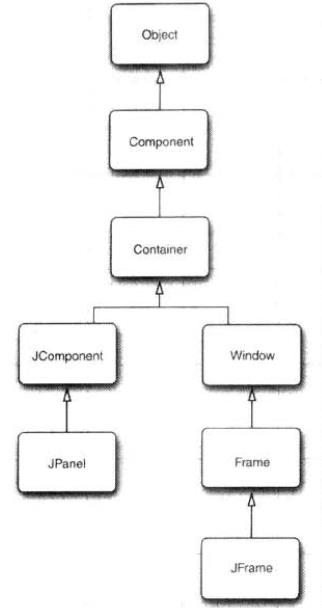1. The main JavaGUI development tool - the birth and function of the Swing class library
A qualified Java Developer must not only master the technology, but also have a certain amount of Java historical background knowledge. So first, let’s briefly introduce the main class library used for JavaGUI development: Swing.
In the Java 1.0 era, there was the Abstract Window Toolkit, abbreviated as AWT, a basic class library for designing GUI. The working principle of the AWT library is to delegate the task of processing user interface elements to the local GUI toolbox of the target platform (operating system), and the local GUI toolbox is responsible for the creation and action of user interface elements. This way of working has advantages and disadvantages. Let’s talk about the advantages first:
The processing speed may be faster.
Can be adapted to different platforms, "write once, use anywhere".
Disadvantages:
Look and feel depends on the target platform.
Some platforms do not have as rich interface components as Windows or Mac (early days). Therefore, the design work of AWT is limited to the "lowest common denominator".
Different platforms have different bugs.
In 1996, Netscape created another GUI library, IFC, which works by drawing user interface components on a blank window, and the peer only needs to be responsible for creating and drawing the blank window. Sun and Netscape collaborated and perfected this approach, creating a user interface library called Swing. This was the birth of Swing.
But Swing has not completely replaced AWT. So far, Java SE 8 still has two functional class libraries, AWT and Swing:
AWT import java.awt (java is the core package)
Swing import javax.swing (javax package) (Function expansion pack)
The reason why Swing has not completely replaced AWT is that Swing is based on the AWT architecture, and Swing only provides more powerful user interface components. In programs written in Swing, AWT is still needed for event processing. To put it simply, Swing is the user interface class and AWT is the underlying mechanism.

2.Create JFrame frame
3.Add text component JComponent
 How to restore Bluetooth headset to binaural mode
How to restore Bluetooth headset to binaural mode
 What browser is edge?
What browser is edge?
 Win10 does not support the disk layout solution of Uefi firmware
Win10 does not support the disk layout solution of Uefi firmware
 How to use dict function in Python
How to use dict function in Python
 What are the differences between hibernate and mybatis
What are the differences between hibernate and mybatis
 What should I do if iis cannot start?
What should I do if iis cannot start?
 what does bbs mean
what does bbs mean
 Advantages and Disadvantages of Free Overseas Website Servers
Advantages and Disadvantages of Free Overseas Website Servers




